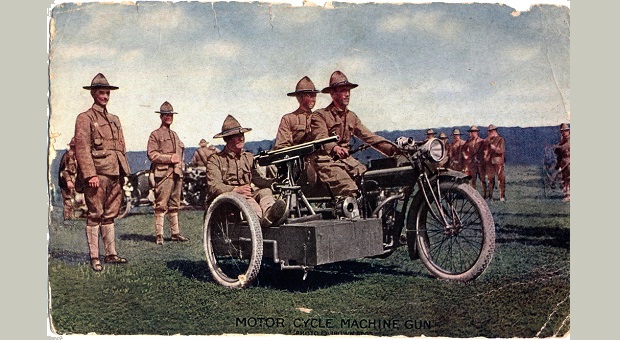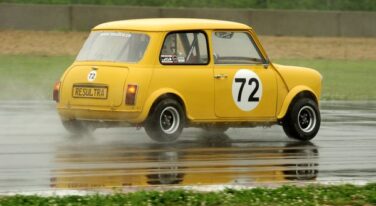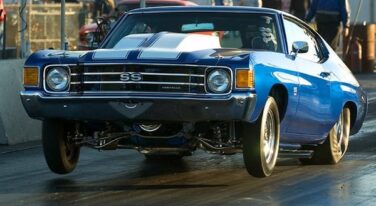
A Slideshow History of the Harley-Davidson, Part 1
Click Here to Begin Slideshow
As the line from the famous 1977 Grateful Dead album goes, “What a long strange trip it’s been.” My “trip” as a motorcycle rider/writer has brought me up close and personal to literally thousands of bikes of all makes, models and vintage… along with their owners. In fact, it was just two years after the album’s release that I published my first feature in a bike mag, so according to the calendar that’s nudging toward 40 years as I make my way literally and figuratively through life on two wheels.
In the course of those travels, I’ve found myself covering events all over the country, as well as penning assignments for most of the motorcycle pubs in the U.S. and several overseas. In the process, with camera in hand, I’ve brushed up close to Harley history and some of it stuck. The sampling of images that follows stitches together an overview of those experiences, logging them in chronological order based on the bike’s production year, starting with the earliest offerings from the Milwaukee Marvel.
To begin with, we have this WWI U.S. Army Motorcycle Sidecar Mounted Machinegun Trooper. In addition to spending time in the hallowed halls of the Harley-Davidson Museum in Milwaukee, peeking into their miles of photos and documents and seeing first hand its long and illustrious history, I’ve also have been collecting my own original images, some of which were created a century or more ago. Often they are postcards; billions of them were posted worldwide beginning in the late 1800s, as they were the equivalent of today’s text messages and Instagram. In this case, we’re looking at a colorized postcard from 1915 showing U.S. Army troops demonstrating a machine gun mounted sidecar combination with its three-man crew. The bike would very likely be a Harley-Davidson.
While it officially first appeared in 1903 with its 27.4 cu. in. F-head motor, the company began supplying the U.S. military in 1915, its solo mount and sidecar machines gaining experience during 1916 when some 20,000 U.S. troops under the command of General John “Black Jack” Pershing were granted permission by the Mexican government to enter their country in pursuit of the bandit/revolutionary Pancho Villa. While they never caught up with him, even with their Harley and Indian motorcycles that could go where heavier vehicles could not, the American army learned valuable lessons, including those concerning the new “Motor Mobile Infantry” and “Mounted Infantry.” Oddly enough their quarry, Pancho Villa, was an avid motorcyclist himself, although preferring the Indian.
As the line from the famous 1977 Grateful Dead album goes, “What a long strange trip it’s been.” My “trip” as a motorcycle rider/writer has brought me up close and personal to literally thousands of bikes of all makes, models and vintage… along with their owners. In fact, it was just two years after the album’s release that I published my first feature in a bike mag, so according to the calendar that’s nudging toward 40 years as I make my way literally and figuratively through life on two wheels.
In the course of those travels, I’ve found myself covering events all over the country, as well as penning assignments for most of the motorcycle pubs in the U.S. and several overseas. In the process, with camera in hand, I’ve brushed up close to Harley history and some of it stuck. The sampling of images that follows stitches together an overview of those experiences, logging them in chronological order based on the bike’s production year, starting with the earliest offerings from the Milwaukee Marvel.
To begin with, we have this WWI U.S. Army Motorcycle Sidecar Mounted Machinegun Trooper. In addition to spending time in the hallowed halls of the Harley-Davidson Museum in Milwaukee, peeking into their miles of photos and documents and seeing first hand its long and illustrious history, I’ve also have been collecting my own original images, some of which were created a century or more ago. Often they are postcards; billions of them were posted worldwide beginning in the late 1800s, as they were the equivalent of today’s text messages and Instagram. In this case, we’re looking at a colorized postcard from 1915 showing U.S. Army troops demonstrating a machine gun mounted sidecar combination with its three-man crew. The bike would very likely be a Harley-Davidson.
While it officially first appeared in 1903 with its 27.4 cu. in. F-head motor, the company began supplying the U.S. military in 1915, its solo mount and sidecar machines gaining experience during 1916 when some 20,000 U.S. troops under the command of General John “Black Jack” Pershing were granted permission by the Mexican government to enter their country in pursuit of the bandit/revolutionary Pancho Villa. While they never caught up with him, even with their Harley and Indian motorcycles that could go where heavier vehicles could not, the American army learned valuable lessons, including those concerning the new “Motor Mobile Infantry” and “Mounted Infantry.” Oddly enough their quarry, Pancho Villa, was an avid motorcyclist himself, although preferring the Indian.



![[Gallery] 45th Louisville Street Rods Car Show](https://www.racingjunk.com/news/wp-content/uploads/2024/10/IMG_6064-e1727990158198-376x206.jpg)


Leave a Reply
You must be logged in to post a comment.